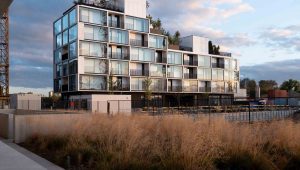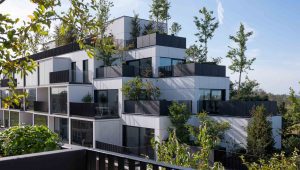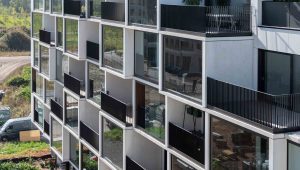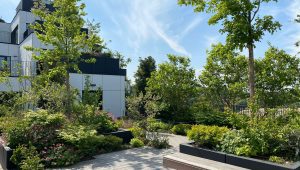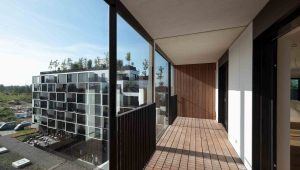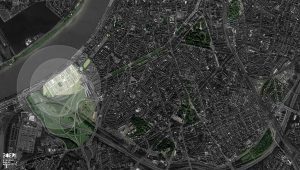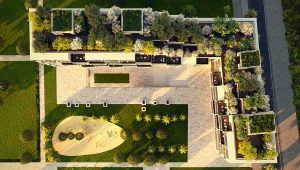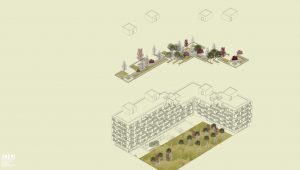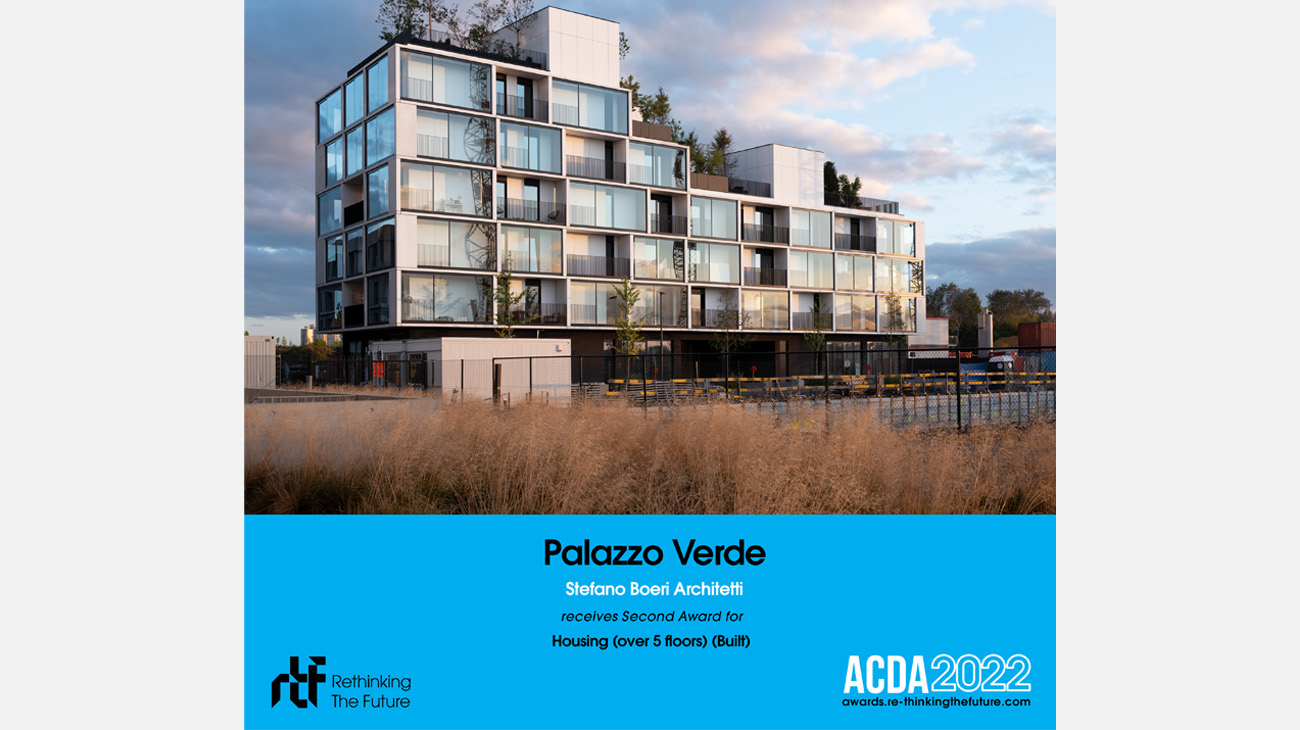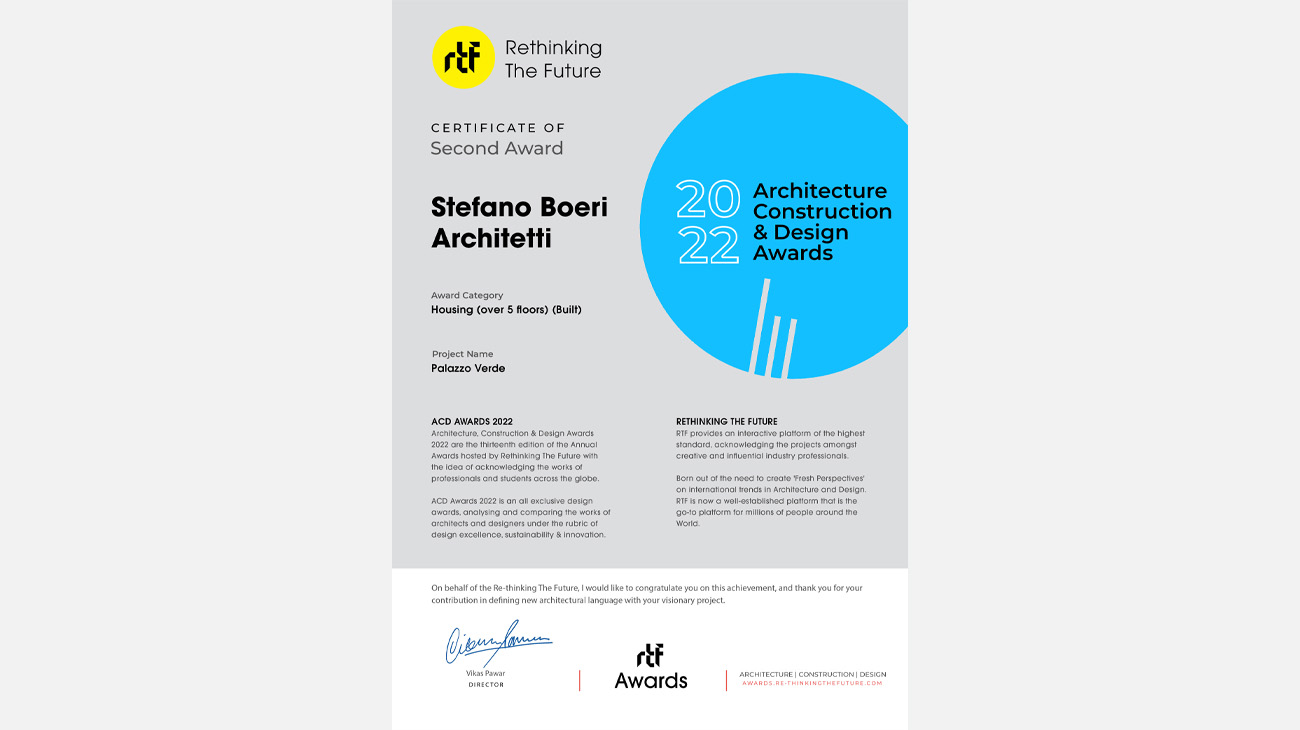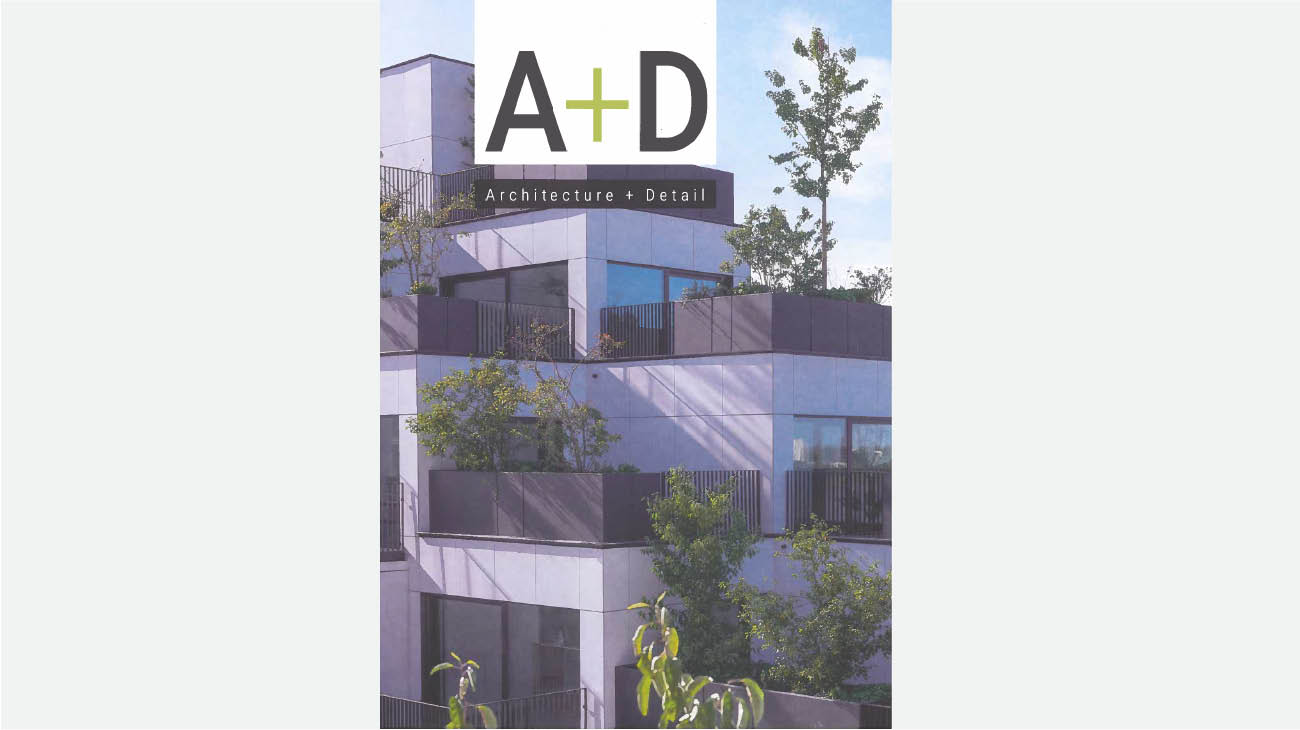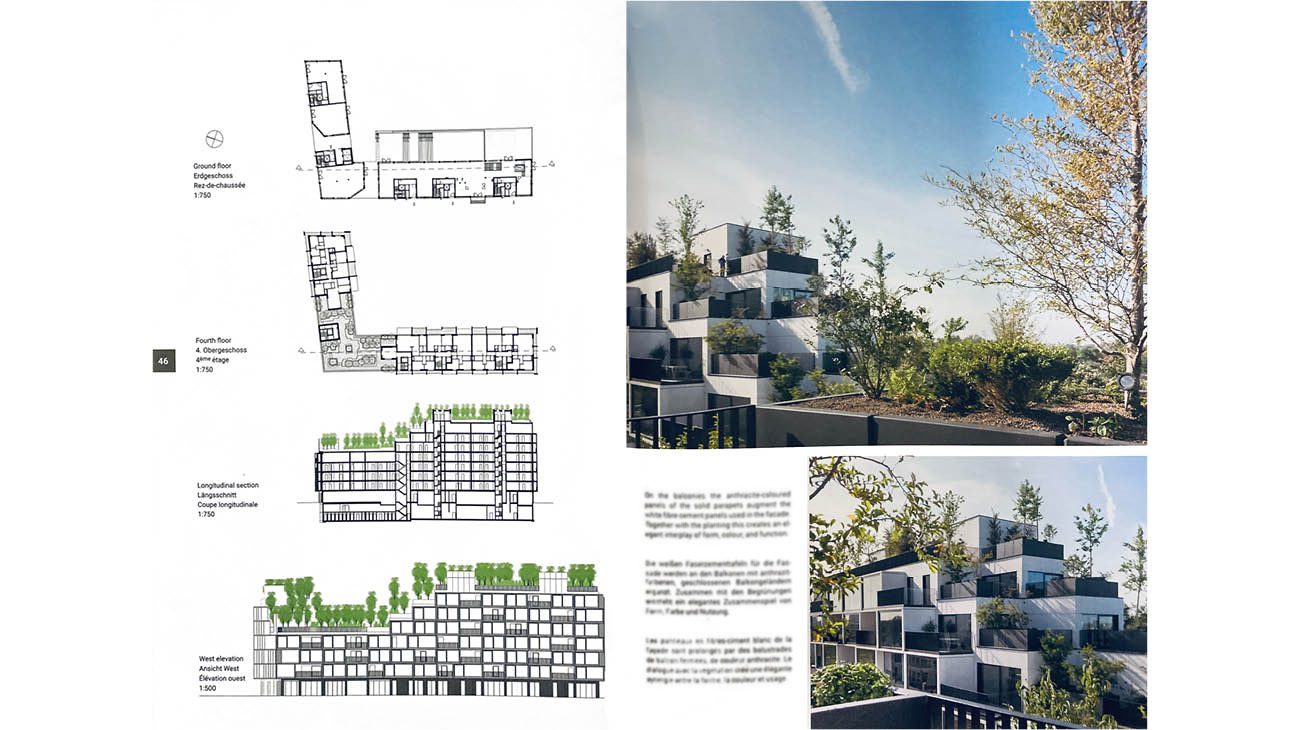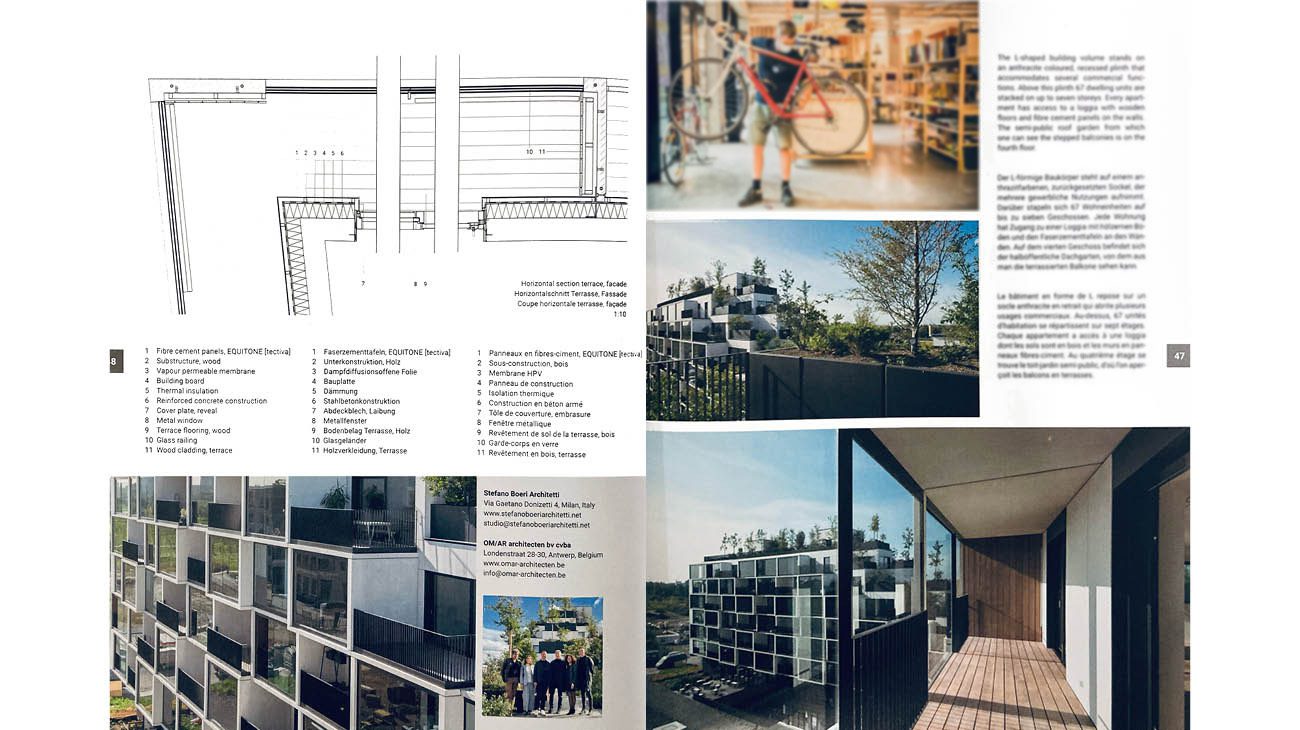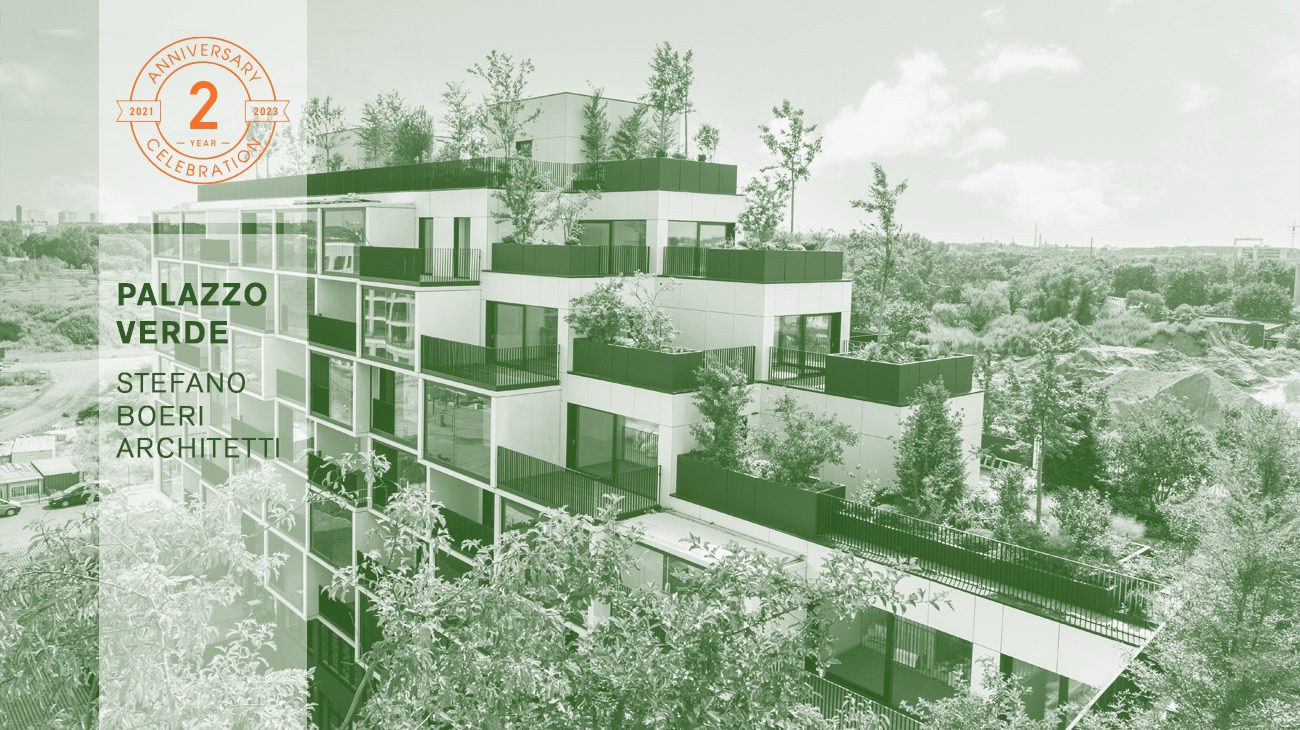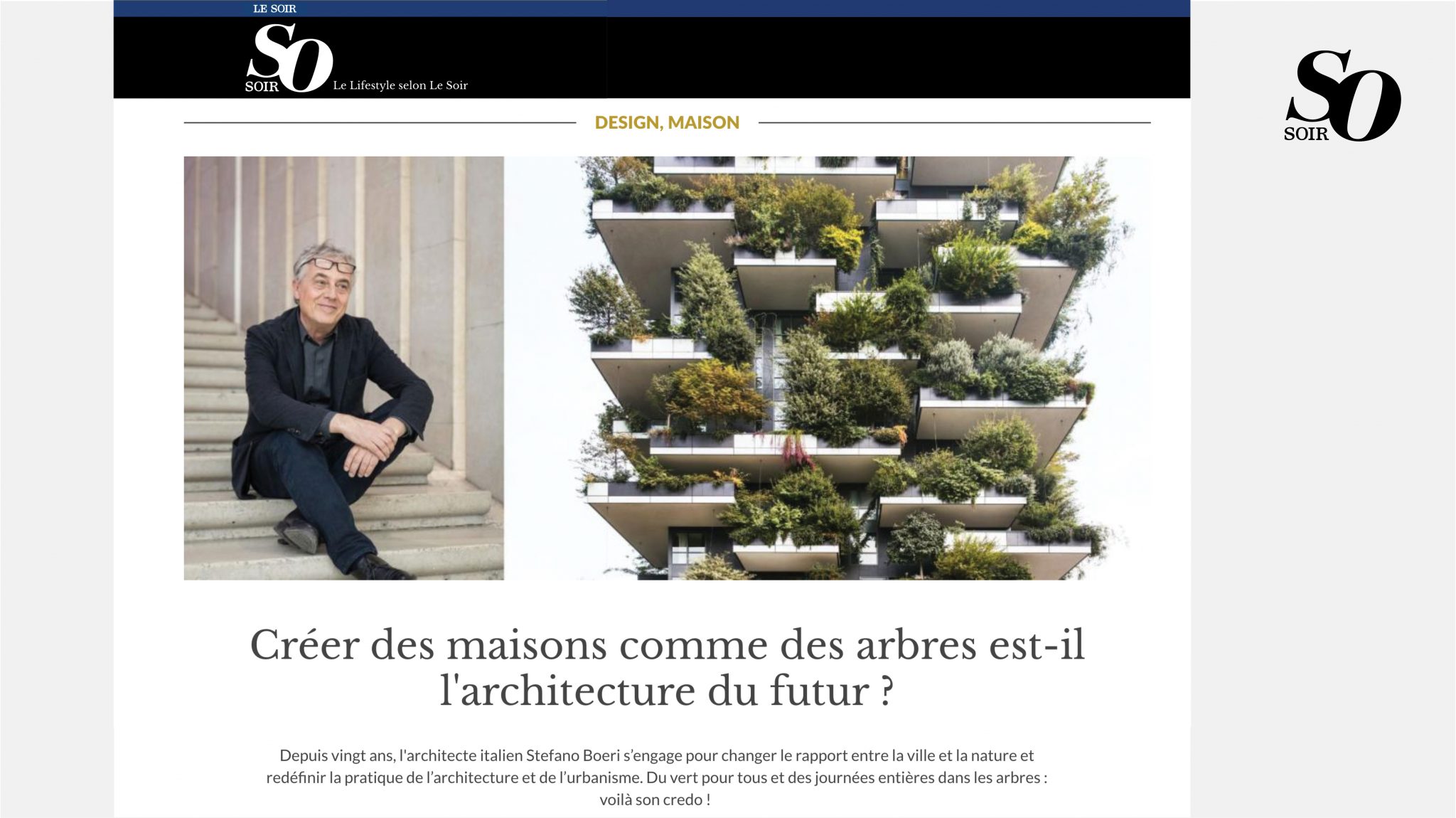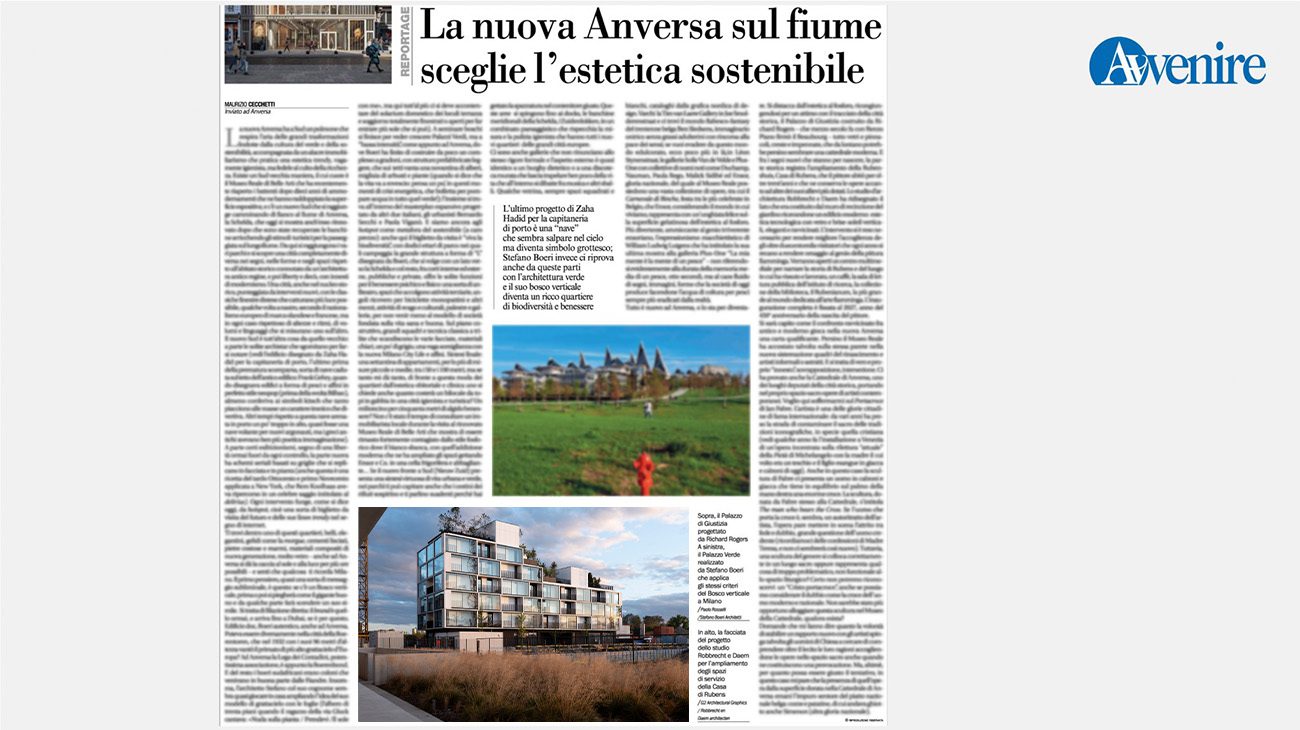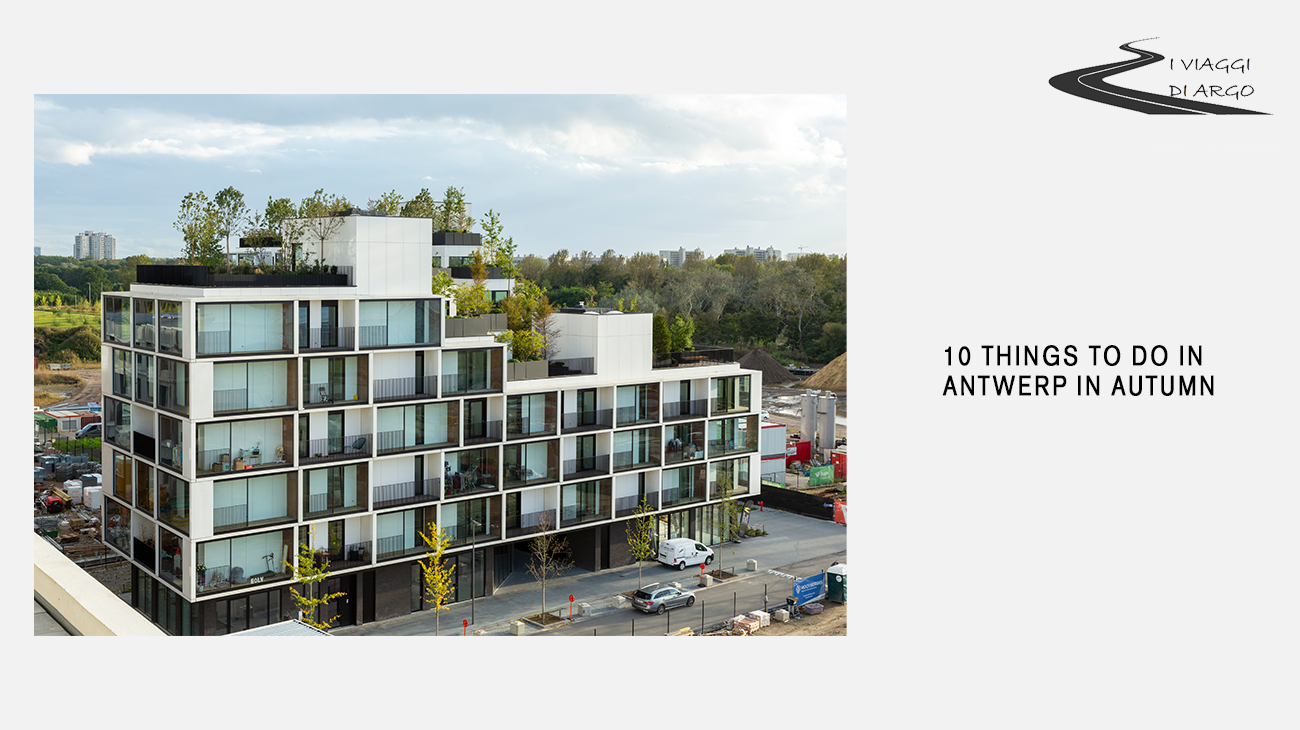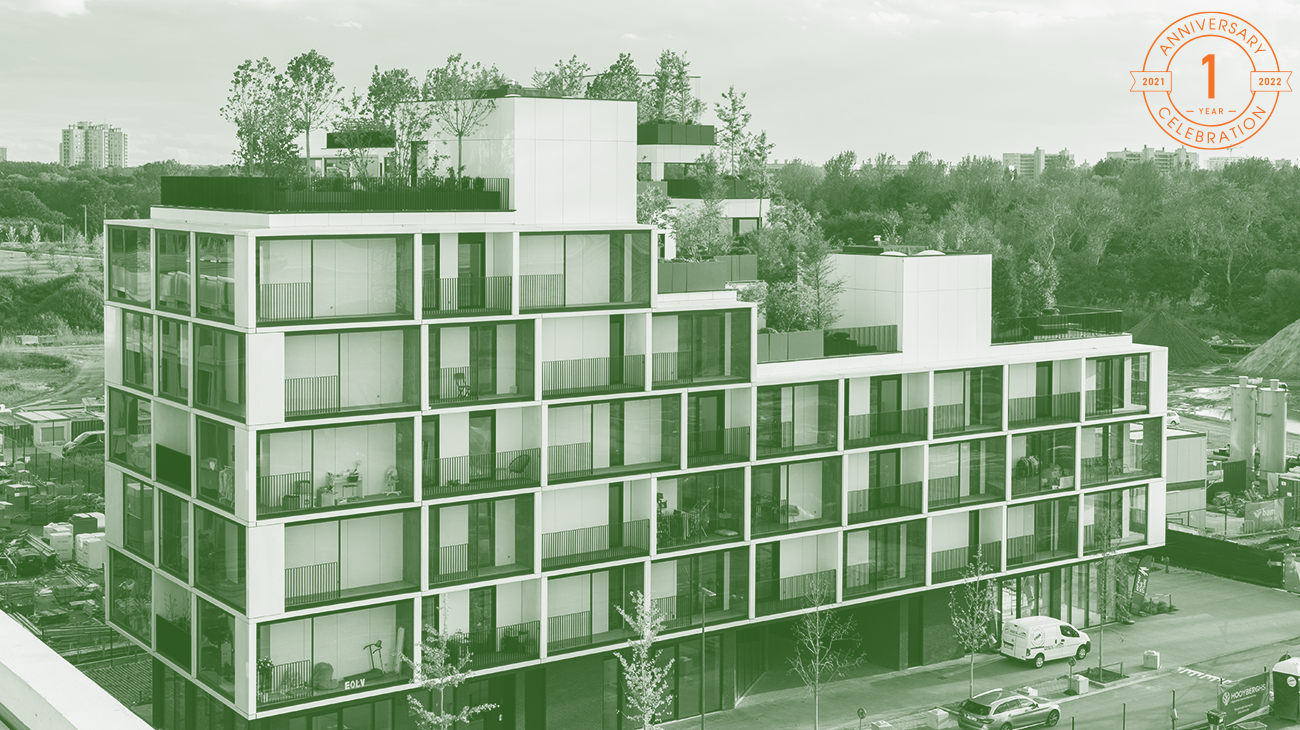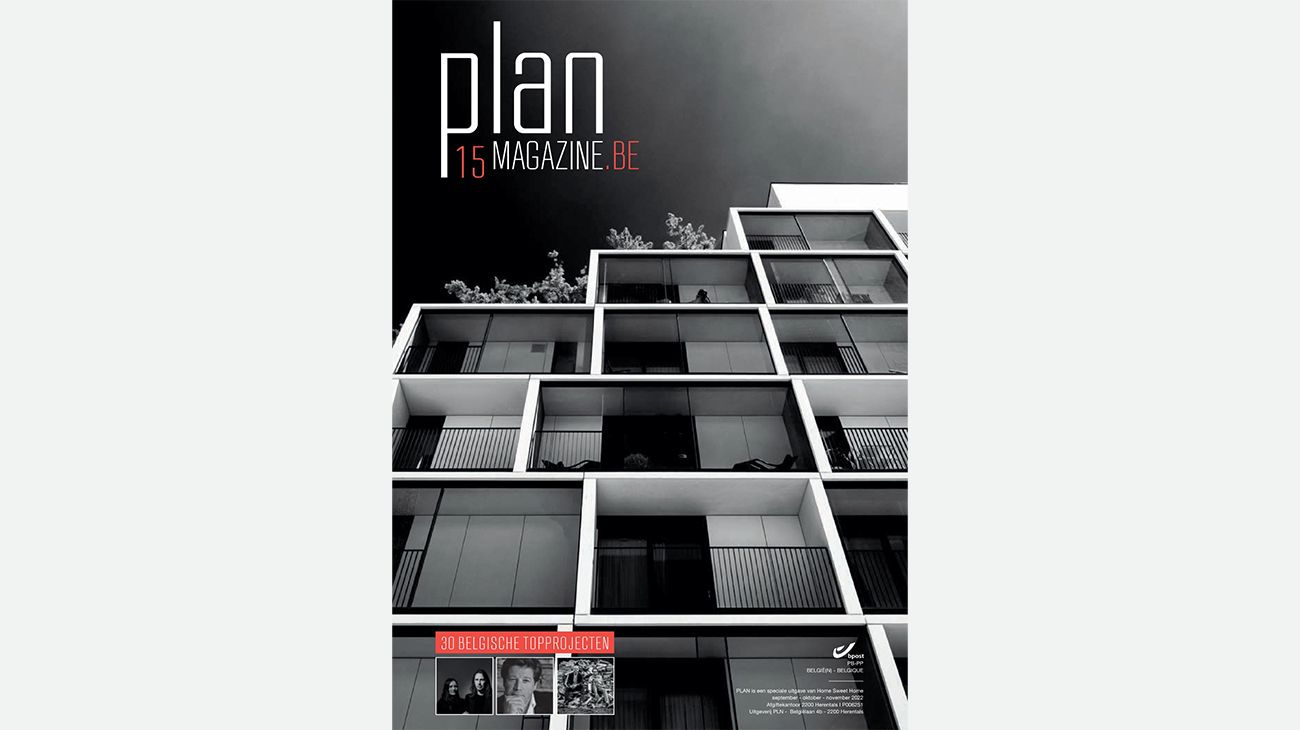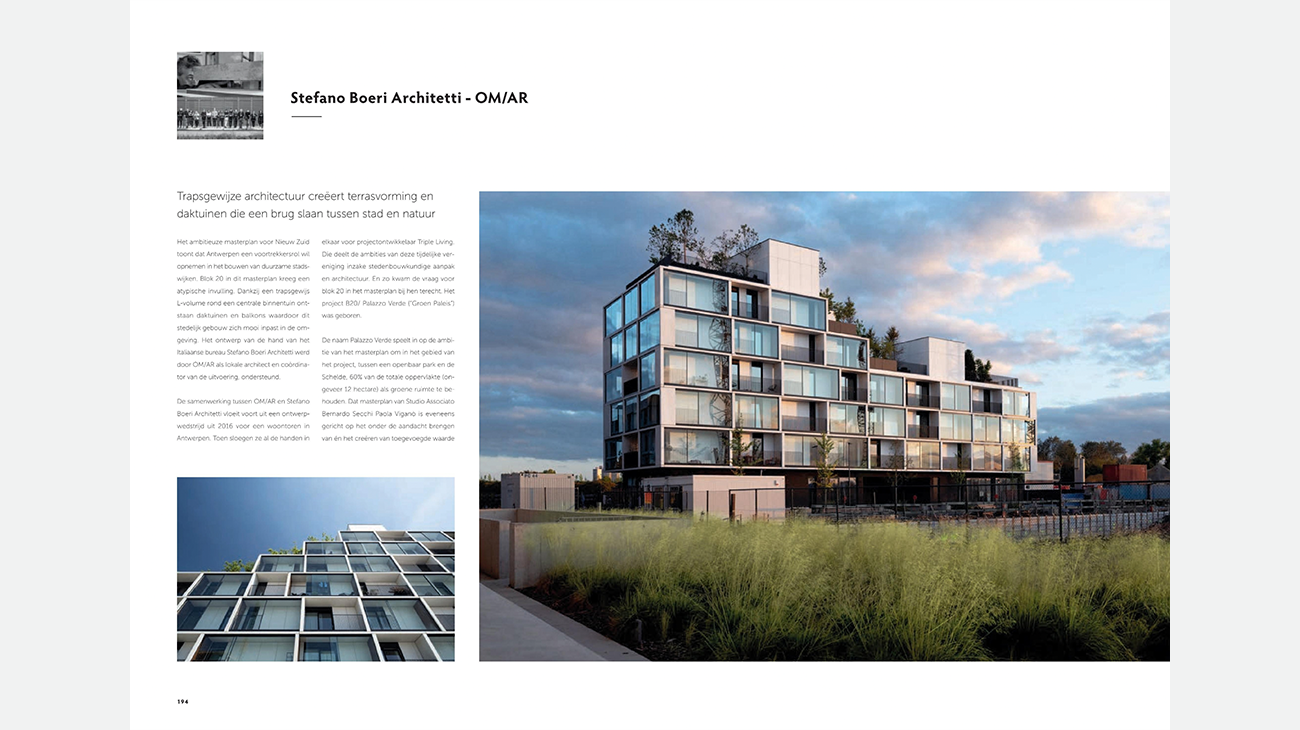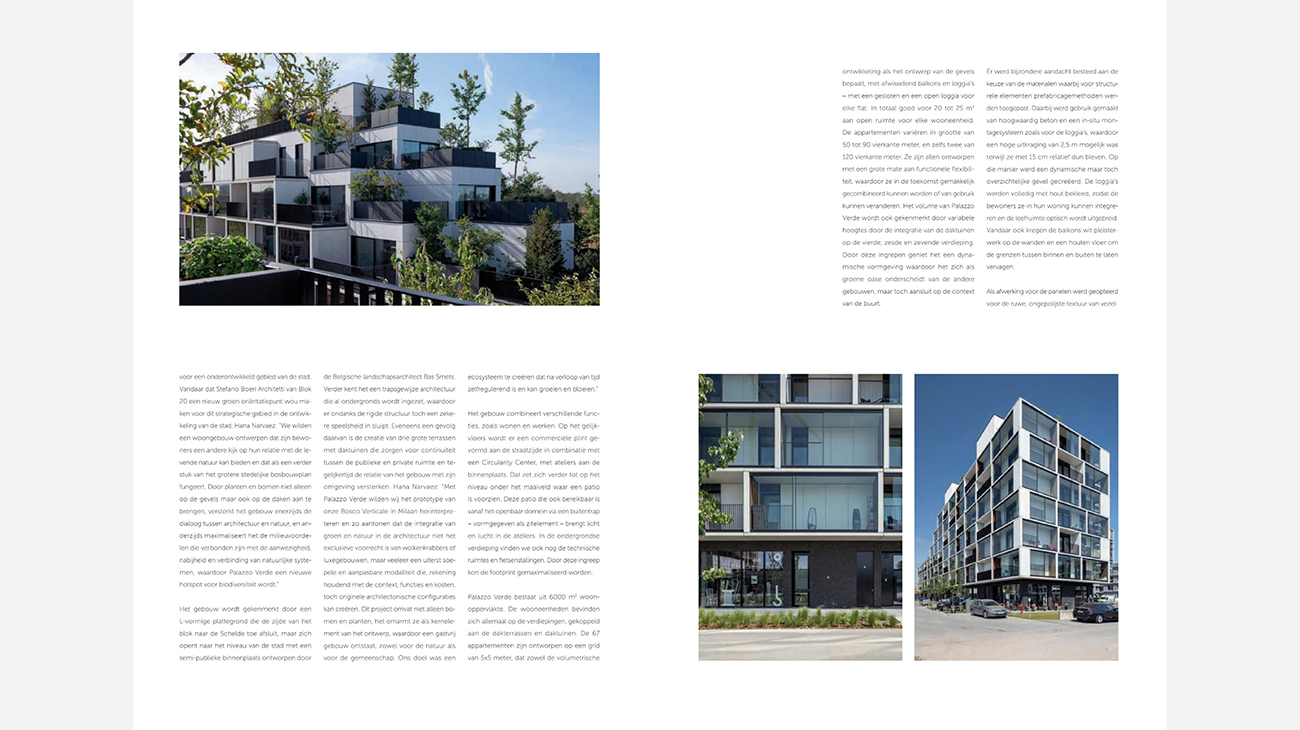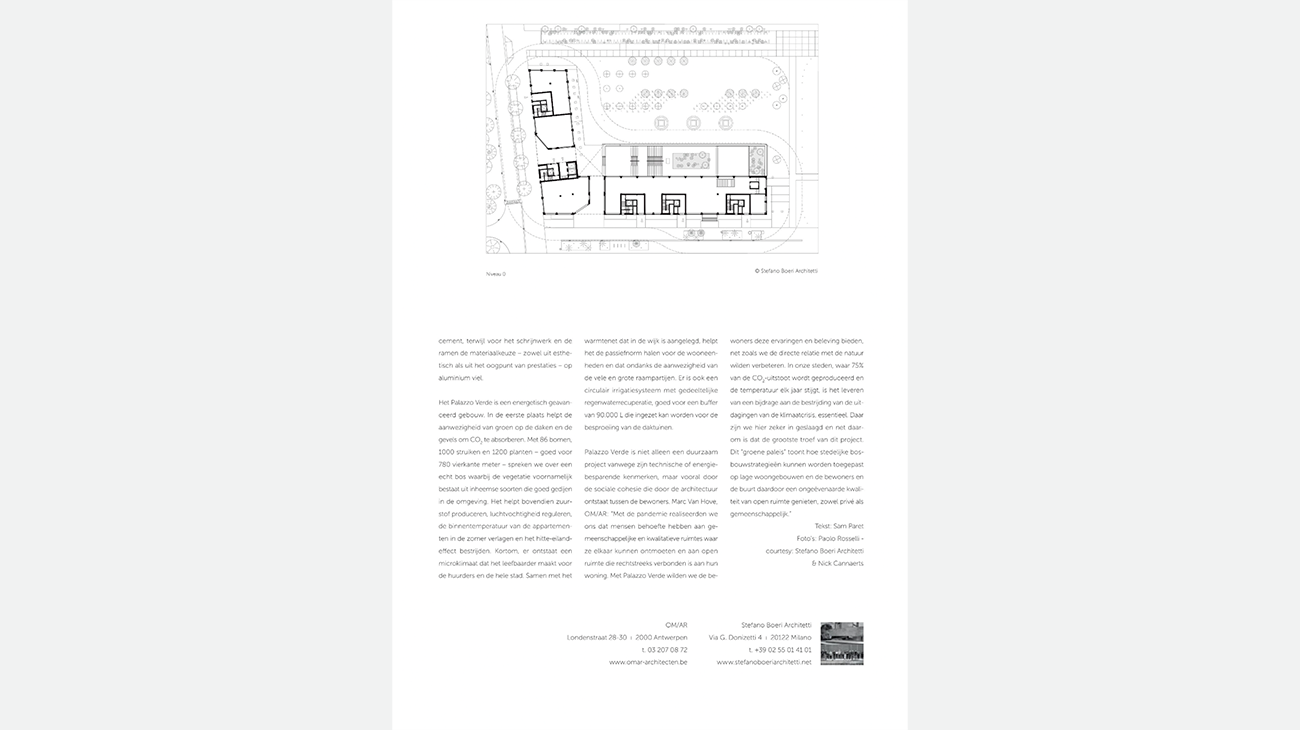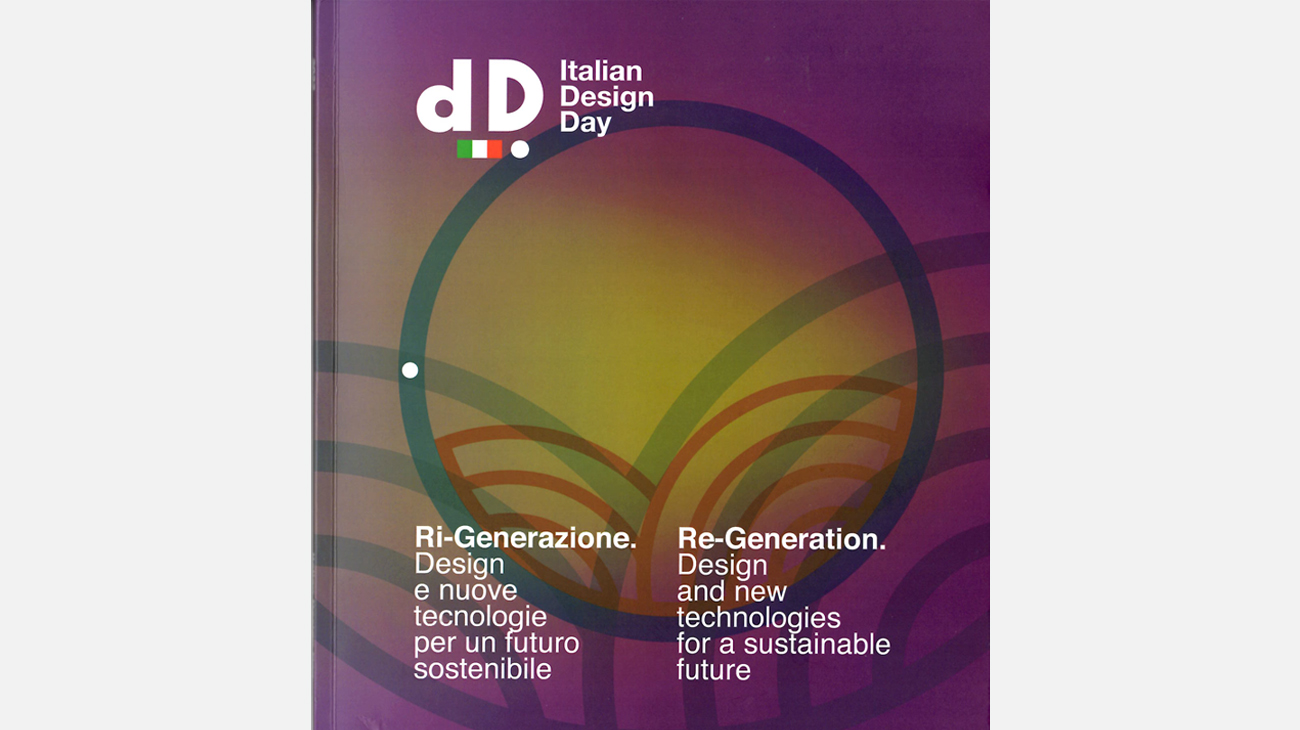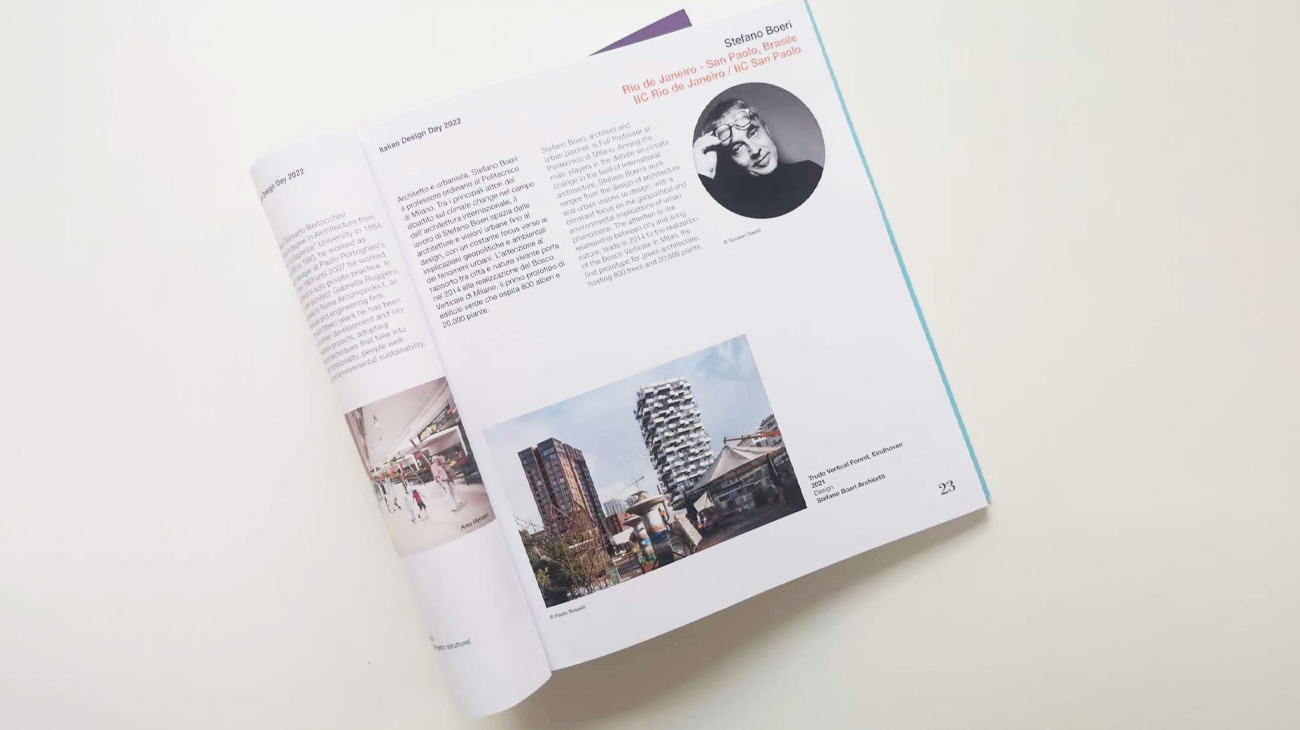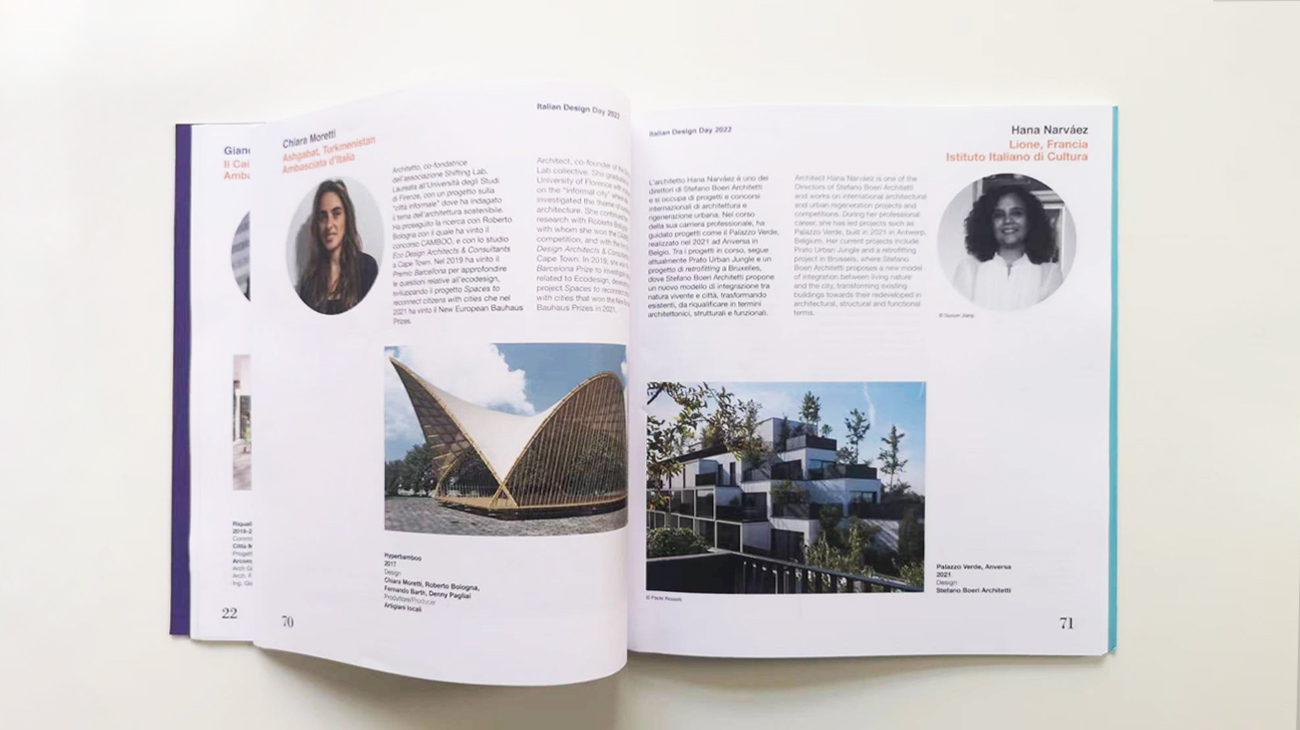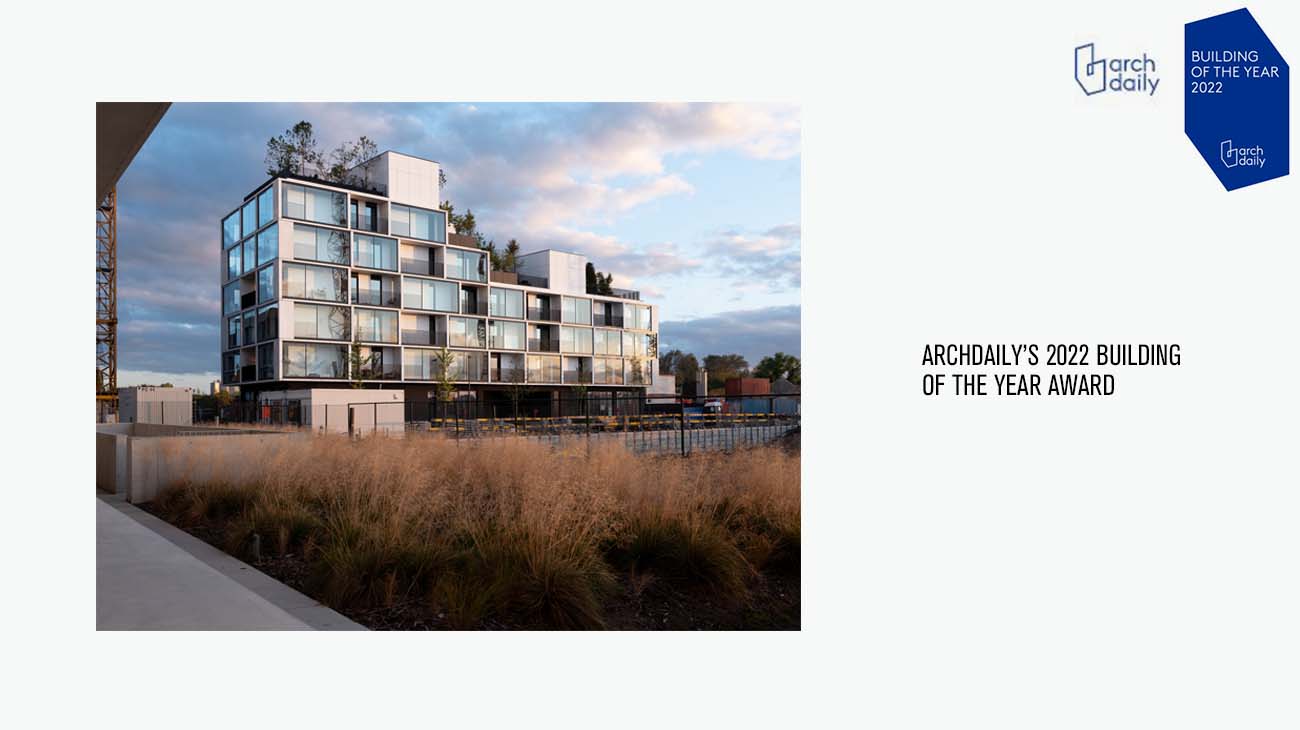Images
Project
Stefano Boeri Architetti
Location
Antwerp, Belgium
Year
2017- 2021
Typology
Architecture, Vertical forest
Client
Triple Living NV.
Project:
Stefano Boeri Architetti
Founding partner: Stefano Boeri
Partner and project director: Francesca Cesa Bianchi
Project leader: Hana Narvaez
Design Team: Sara Gangemi (Senior Landscape Architect)
,Alessandra Magnetti, Daniele Barillari, Elisa Versari, Mario Shilong Tan
Consultants:
Local architects: OM / AR Marc Van Hove, Glenn Somers, Eef Van Meer
Plantation consultant: Studio Laura Gatti
MEP Engineering: Sweco
Sustainability: Ing. Dirk DeGroof
Acoustics: D2S International
Structural Engineering: GroupD
Contractor: Van Laere
Photo: Paolo Rosselli
Stefano Boeri Architetti’s Palazzo Verde, a new landmark in Antwerp’s Nieuw Zuid district, declines the Vertical Forest prototype in a strategic neighbourhood for the city’s development.
The project is located between the public park and the Schelda river, in an area within Bernardo Secchi and Paola Viganò’s expansion plan, which envisages maintaining 60% of the entire area (about 12 hectares) as green space. Placed on a particularly interesting lot from an urban planning point of view, the building on the one hand enhances the dialogue between architecture and living nature, and on the other – welcoming plants and trees not only on the façades, loggias and balconies, but also on the roof – is configured as a biodiversity hotspot, multiplying the environmental benefits linked to the proximity and connectivity of ecosystems.
Palazzo Verde, characterised by an L-shaped layout that closes the side of the block towards the Schelda River, opens up to the city’s elevation with a semi-public courtyard designed by Belgian landscape architect Bas Smets. The ground connection is characterised by the presence of commercial spaces on the street front, while towards the courtyard it hosts spaces for recreational activities. A staircase, which also serves as a public amphitheatre, provides direct access from the courtyard to the Circularity Centre, where residents and citizens can repair bicycles or other everyday objects.
The continuity between public and private space is also emphasised by the three large terraces housing roof-gardens, which enhance the relationship of the Palazzo Verde with the urban and environmental context.
Palazzo Verde houses 86 trees, 1.000 shrubs and 1.200 plants, for a total of 780 square metres of green area consisting mainly of native species typical of the forest and sub-forest environment, selected by a team of experts and botanists. The garden roof is accessible to residents directly from the stairwells and is recognisable as a protected and inclusive space, achieved by positioning the trees and shrubs along the perimeter of the terraces.
The building, with heights ranging from 3 to 7 storeys, has 67 flats: of these, 6 are located at the building’s heads and are characterised by double and triple exposure.
The project is defined starting from a 5×5 metre grid, which determines both the volumetric trend and the design of the façades, composed of alternating balconies and loggias. Particular attention is paid to the concept of the threshold: with one closed and one open loggia for each flat – for a total of about 20/25 square metres each – the open space becomes an extension of the living unit, in a dynamic rethinking of the boundary between inside and outside.
The optimisation of space in favour of greenery is in fact also reflected in the internal layout of the flats, of varying sizes – from 50 to 90 square metres, with two 120 square metre flats – designed with a high degree of functional flexibility, to allow for future combination or changes in use.
In terms of construction, all the loggias were built with prefabricated systems, using a high-performance cement and an in-situ assembly system, which allowed for a 2,5 m overhang, although with a relatively thin thickness (15 cm). The use of prefabrication techniques made it possible to reduce the transport of construction elements and materials by road as well as construction time (18 months in total).
In terms of material choices, special attention has also been paid to balconies and loggias: the former are conceived solely as open spaces and are, consequently, characterised by white plaster on the walls and wooden flooring; the latter, on the other hand, are entirely covered with wood so that residents can annex them to their own unit, thus extending the living space. Thus, between loggias and fixed, parapet-free windows, the view from the flats is totally open, in an innovative design for a residential building.
With the Palazzo Verde, a low-density declination of the Vertical Forest model is pursued, demonstrating how the inclusion of greenery and nature in architecture is not the exclusive prerogative of skyscrapers or luxury buildings, but rather an extremely flexible and adaptable modality, capable of generating different original architectural configurations starting from the specificities linked to the context, functions and local needs.
The Palazzo Verde is an example of how even a small residential building can offer its inhabitants a different perspective of relationship with living nature, acting as a further piece in the broader design of urban forestation.

